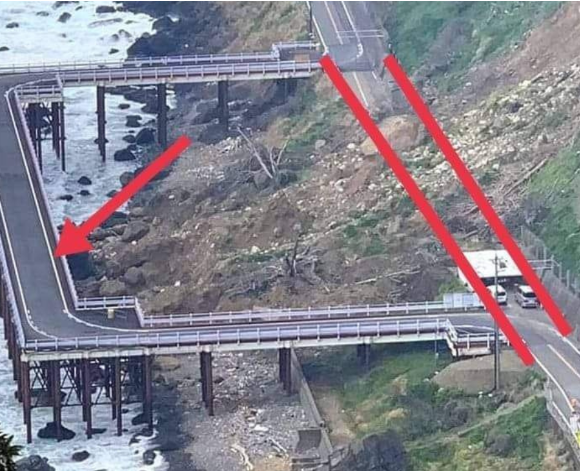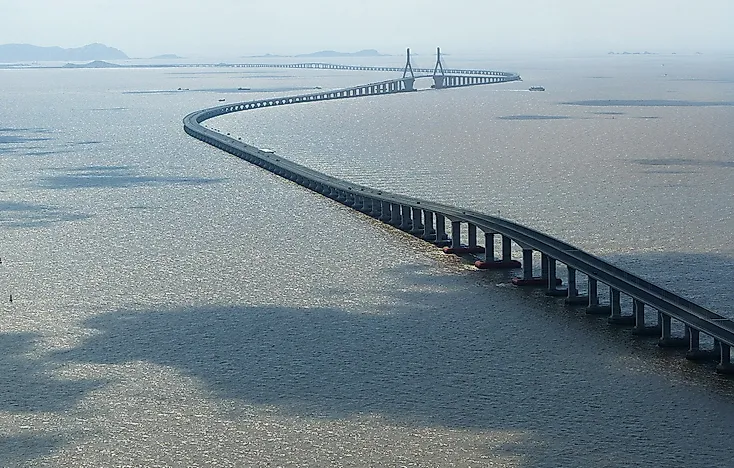Bridges are more than just paths that span rivers, valleys, or roads. They’re marvels of engineering, each one carefully crafted to balance function, safety, and design. If you’ve ever seen a bridge that doesn’t follow a straight line, you might have wondered: why build a bridge with a curve? What’s the logic behind these unique designs? In this article, we’ll explore the reasons engineers and architects sometimes choose curved bridge designs, especially when it comes to protecting the structure from natural hazards like landslides.
The Science of Curved Bridges: Why Straight Isn’t Always Best

Most people assume a straight bridge is the most efficient way to get from one side to the other. After all, the shortest distance between two points is a straight line, right? While that might work on paper, real-world environments often require creative solutions. Curved bridges, although appearing more complex, are purposefully designed to handle various environmental and structural challenges.
Curving a bridge is not a stylistic choice alone—it serves functional purposes that are often critical to the bridge’s longevity and stability. Let’s break down why engineers sometimes opt for curves rather than a simple straight line.
Protection from Landslides and Natural Hazards
One of the most important reasons for building curved bridges is to protect them from natural hazards like landslides. When a bridge traverses mountainous or hilly terrain, landslides can pose a serious threat, especially in areas prone to heavy rains or earthquakes. A straight bridge might be more susceptible to the force of a landslide, as the force would hit it directly.
How Curves Help Divert Forces
Curved bridges can better withstand the sideways forces exerted by landslides because of their shape. In a curve, forces are distributed more evenly across the structure, which can prevent the bridge from sustaining heavy damage in one concentrated area. A curve allows the bridge to deflect the sliding earth, dissipating some of the force along the length of the curve instead of focusing it all in one spot.
By reducing the impact on any one section of the bridge, curved designs help keep the bridge stable and secure, even in the event of a landslide.
Improving Stability and Load Distribution
Beyond landslide protection, curved bridges offer structural advantages that make them ideal for certain landscapes. Bridges must support both vertical loads (the weight of vehicles, people, and the bridge itself) and horizontal loads (such as wind, seismic activity, and any lateral forces like landslides).
Curved Bridges Distribute Loads More Evenly
Curved designs naturally distribute loads more evenly across the entire structure. This means that no single part of the bridge bears the entire weight or pressure, reducing the risk of structural failure. In straight bridges, the weight and pressure are often focused on certain points, which can create vulnerabilities. By curving the bridge, engineers can disperse these forces, which ultimately extends the lifespan of the bridge.
This even distribution also contributes to smoother movement for vehicles, as the bridge can flex slightly under heavy loads without compromising its integrity.
Navigating Challenging Terrain
Another reason for building bridges with curves is to navigate challenging terrain. In regions with mountains, rivers, or uneven landscapes, it can be difficult—if not impossible—to lay down a straight path. Engineers often have to work with the natural layout of the land, which may require them to include curves to avoid obstacles like steep hillsides or rock formations.
Maneuvering Around Obstacles
Curved bridges allow designers to adjust the path of the bridge based on the surrounding terrain. Instead of trying to remove obstacles, which can be both costly and damaging to the environment, engineers create a curved bridge that winds around these natural features. This approach not only makes construction easier and more efficient but also helps preserve the surrounding environment, a critical factor in today’s eco-conscious world.
Enhancing the Aesthetic Appeal of the Bridge

While practicality is a major factor, aesthetics often play a role in the decision to build a curved bridge. Bridges are prominent structures that can shape the visual character of a landscape. A curved bridge often looks more harmonious in natural settings, blending with the contours of the land rather than imposing a rigid line across it.
Creating Visual Harmony
Bridges like San Francisco’s Golden Gate Bridge and the Helix Bridge in Singapore demonstrate how a curved design can enhance the beauty of a location. By incorporating curves, engineers create visually appealing structures that complement the environment rather than disrupt it. Many cities view bridges as landmarks, so their aesthetic value can be just as important as their functional purpose.
Improving Safety and Traffic Flow on the Bridge
Safety is a paramount concern in bridge design, and curved bridges often contribute to smoother traffic flow, particularly in areas with sharp turns or winding roads. A curved bridge can be an extension of the natural road path, which reduces the need for abrupt changes in direction.
Smoother Transitions for Vehicles
For example, if a bridge is meant to connect two points on a curved road, building a straight bridge would require sharp turns at both ends, potentially increasing the risk of accidents. A curved bridge, on the other hand, allows for a smoother transition that matches the natural flow of the road. This is especially useful in highways or elevated roads that cross over valleys or rivers where drivers are traveling at higher speeds.
Taking Advantage of Modern Materials and Techniques

With advancements in construction technology and materials, building curved bridges is now more feasible and cost-effective than ever. Concrete, steel, and other materials used in modern bridge construction offer enhanced flexibility and strength, allowing engineers to incorporate curves without sacrificing durability.
Leveraging Flexible Materials for Complex Designs
Modern materials enable engineers to build bridges that can handle complex stress patterns, making it easier to incorporate curves that will withstand both the elements and the test of time. These materials, coupled with sophisticated computer modeling, give engineers the freedom to create bridge designs that were once impossible to achieve.
Conclusion: Curved Bridges Combine Function, Safety, and Beauty
Curved bridges are more than just unique design choices; they’re practical solutions to some of the most challenging engineering problems. By curving a bridge, engineers can protect it from landslides, distribute loads more effectively, adapt to difficult terrain, and enhance traffic safety—all while adding a visually appealing element to the landscape.
The next time you see a curved bridge, you’ll know that there’s a lot more to its shape than meets the eye. Each curve is a carefully considered element that balances functionality, safety, and beauty, demonstrating the ingenuity of modern engineering. These structures remind us that sometimes, the best path from point A to point B isn’t always a straight line.


